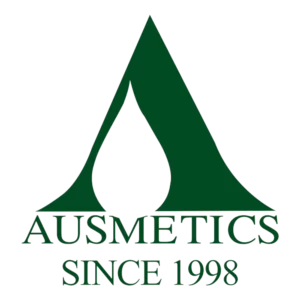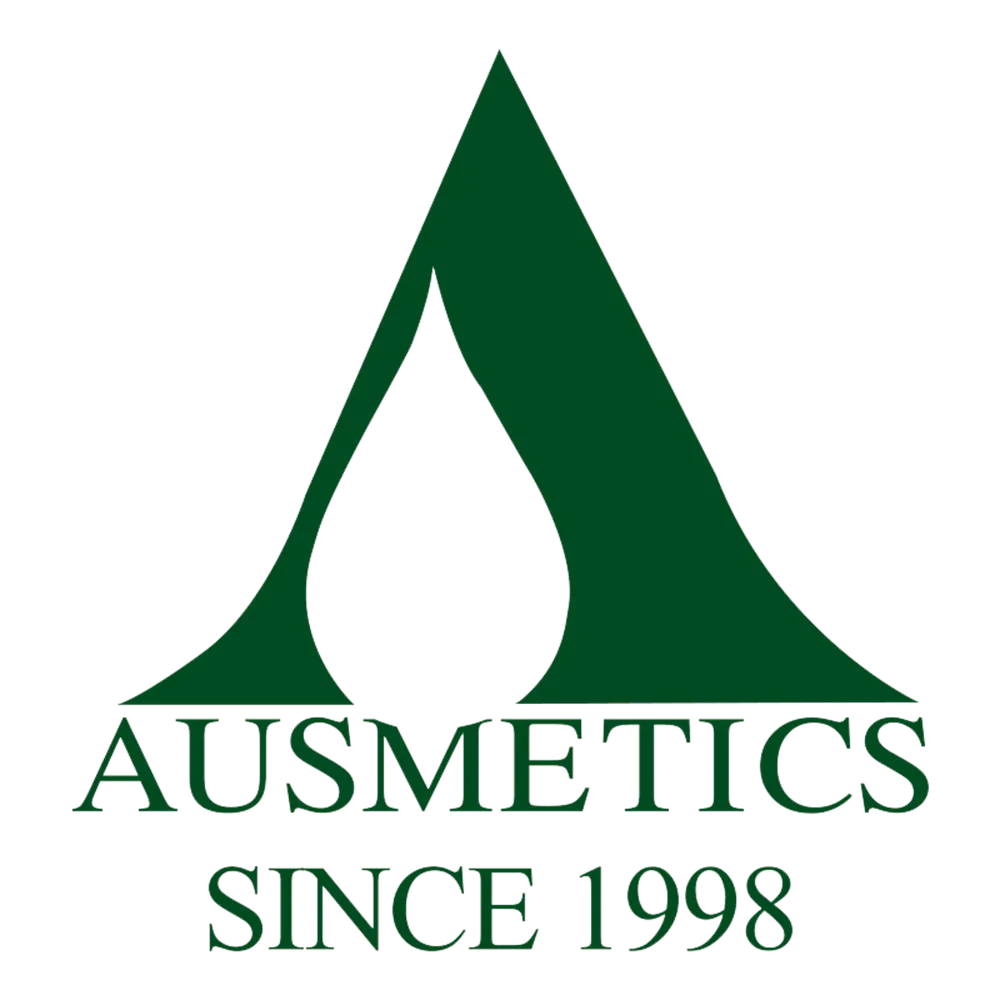SEBUAH: Some examples of synthetic ingredients in beauty products are emulsifiers, surfactants, silicones, preservatives, fragrances, pigments, vitamins, antioksidan, peptida, retinoids, and sunscreens.
Decoding Sintetis: Tinjauan Pakar Bahan Kecantikan Sintetis

by Alice Zhang · Updated Jul. 31, 2023

Ketika Anda memikirkan produk kecantikan, bahan apa yang terlintas dalam pikiran Anda? Anda mungkin memikirkan bahan-bahan alami seperti ekstrak tumbuhan, minyak, atau mineral. Namun tahukah Anda bahwa banyak produk kecantikan juga mengandung bahan sintetis, which are chemicals created in a lab? These chemicals are often used to enhance the performance, stability, or appearance of beauty products.
Synthetic beauty ingredients are not necessarily bad or harmful for your skin or hair. nyatanya, they can offer many benefits and functionalities that natural ingredients cannot. Namun, synthetic ingredients are also often misunderstood and misrepresented by the media and consumers. Dalam artikel ini, we will give you an expert overview of synthetic beauty ingredients in cosmetics production, helping you to understand their science, role, keamanan, and innovation.
Daftar isi
I. Understanding Synthetic Beauty Ingredients
Synthetic beauty ingredients are organic or inorganic compounds that are artificially produced by chemical synthesis. Chemical synthesis is a process in which simpler substances are combined to form more complex ones. Sebagai contoh, synthetic vitamin C is made by combining glucose with other chemicals in a series of reactions.
Synthetic beauty ingredients can be derived from natural sources or from petroleum. Sebagai contoh, glycerin is a synthetic ingredient that can be made from vegetable oils or from propylene glycol, which is derived from petroleum. Synthetic ingredients can also be designed to mimic natural ones. Sebagai contoh, synthetic fragrances are created to resemble the smell of flowers, fruits, or spices.
Synthetic beauty ingredients are used in cosmetics for various reasons. Some of them are:
● To improve the performance of the product. Sebagai contoh, synthetic polymers can form a film on the skin or hair to provide long-lasting hydration, protection, or hold.
● To increase the stability of the product. Sebagai contoh, synthetic preservatives can prevent the growth of bacteria, fungi, or mold in the product and extend its shelf life.
● To enhance the appearance of the product. Sebagai contoh, synthetic pigments can provide vibrant colors that natural pigments cannot.
● To reduce the cost of the product. Sebagai contoh, synthetic ingredients can be cheaper and more readily available than natural ones.
Some of the popular types of synthetic ingredients used in beauty products are:
● Emulsifiers: These are substances that help to mix oil and water together to form a smooth and uniform texture. Examples are polysorbate 20, cetearyl alcohol, and lecithin.
● Surfactants: These are substances that help to cleanse the skin or hair by lowering the surface tension of water and allowing it to mix with dirt and oil. Examples are sodium lauryl sulfate (SLS), cocamidopropyl betaine, and decyl glucoside.
● Silicones: These are substances that form a silky and slippery layer on the skin or hair to provide smoothness, shine, and protection. Examples are dimethicone, cyclomethicone, and phenyl trimethicone.
● Preservatives: These substances help to prevent the growth of microorganisms and keep the product safe and effective for use. Examples are parabens, phenoxyethanol, and benzyl alcohol.
● Fragrances: These are substances that give a pleasant smell to the product. Examples are linalool, limonene, and geraniol.
II. The Role of Synthetic Beauty Ingredients in Product Formulation
Synthetic beauty ingredients play an important role in product formulation. They help to achieve the desired properties and effects of the product, such as texture, consistency, viskositas, pH, color, aroma, kemanjuran, dan keselamatan.
Product formulation is the process of selecting and combining different ingredients to create a final product that meets the needs and expectations of consumers. It involves various steps such as:
● Research: Product developers conduct market research to discover consumer trends, preferences, and needs. They also perform scientific research to discover new ingredients and technologies.
● Design: This is where product developers design the concept and specifications of the product, such as its name, kemasan, claims, benefits, target audience, and price point.
● Development: This is where product developers test different combinations of ingredients and methods to create a prototype of the product that meets the design criteria.
● Evaluation: This is where product developers evaluate the prototype for its quality, performance, stability, keamanan, and consumer acceptance.
● Production: This is where product developers scale up the prototype for mass production and distribution.
The role of manufacturers in product formulation is to ensure that they use high-quality synthetic ingredients that comply with regulatory standards and ethical practices. Manufacturers also need to ensure that they use appropriate equipment and techniques to produce consistent and reliable products.
III. Safety and Regulations of Synthetic Beauty Ingredients
One of the common concerns about synthetic beauty ingredients is their safety for human health and the environment. Many consumers believe that synthetic ingredients are toxic or harmful because they are not natural or because they have long and complex names.
Namun, this is not necessarily true. Synthetic ingredients are not inherently bad or good. They can be safe or unsafe depending on their chemical structure, concentration, exposure, and interaction with other substances. Sebagai contoh, water is a natural and safe substance, but it can be harmful if consumed in excess or if contaminated with pollutants. On the other hand, aspirin is a synthetic and potentially dangerous substance, but it can be beneficial if used in the right dose and for the right purpose.
Safety assessments of synthetic ingredients are conducted through scientific research and by regulatory agencies. Scientific evidence is obtained from various sources, such as laboratory tests, animal studies, human trials, epidemiological studies, and case reports. Regulatory authorities are organizations that set the rules and standards for the use of synthetic ingredients in cosmetics. They review the scientific evidence and assess the risks and benefits of synthetic ingredients. They also monitor and enforce the compliance of manufacturers and marketers with the regulations.
Some of the major regulatory authorities for synthetic ingredients in cosmetics are:
● The Food and Drug Administration (FDA) in the United States
● The European Commission (EC) in the European Union
● The Ministry of Health, Labour and Welfare (MHLW) in Japan
● The National Medical Products Administration (NMPA) in China
● The Health Sciences Authority (HSA) in Singapore
These regulatory authorities have different criteria and procedures for approving synthetic ingredients in cosmetics. They also have different lists of prohibited or restricted synthetic ingredients that cannot be used or can only be used under certain conditions. Sebagai contoh, some of the synthetic ingredients that are banned or limited by some regulatory authorities are:
● Bithionol: A synthetic preservative that can cause skin irritation and photosensitivity. It is prohibited by the FDA, EC, MHLW, NMPA, and HSA.
● Chlorofluorocarbon propellants: Synthetic gases that contribute to global warming, deplete the ozone layer and are considered hazardous to human health.
● Chloroform: A synthetic solvent that can cause cancer and organ damage. It is prohibited by the FDA, EC, MHLW, NMPA, and HSA.
● Hydroquinone: A synthetic skin-lightening agent that can cause irritation and inflammation, as well as hyperpigmentation. It is prohibited by the EC, MHLW, NMPA, and HSA. It is restricted by the FDA to a maximum concentration of 2% for over-the-counter products and 4% for prescription products.
● Parabens: Parabens are preservatives used in cosmetics and other products that have been shown in laboratory tests to mimic the hormone estrogen and disrupt hormone function. They are prohibited by the EC for five types: isopropylparaben, isobutylparaben, phenylparaben, benzylparaben, and pentylparaben. They are restricted by the EC for four types: methylparaben, ethylparaben, propylparaben, and butylparaben to a maximum concentration of 0.4% for single parabens and 0.8% for mixtures of parabens. They are allowed by the FDA, MHLW, NMPA, and HSA.
The safety and regulations of synthetic ingredients in cosmetics are constantly evolving as new scientific evidence and consumer demands emerge. As a result, product developers and consumers should be aware of the latest information and trends related to synthetic ingredients.
IV. Branding and Consumer Perception
Another aspect of synthetic beauty ingredients that product developers need to consider is their impact on branding and consumer perception. Branding is the process of creating an image that differentiates a product from its competitors and appeals to its target market. Consumer perception is the way consumers think and feel about a product based on their knowledge, beliefs, attitudes, and experiences.
Synthetic ingredients can affect branding and consumer perception in positive or negative ways depending on how they are communicated and presented to consumers. Some of the factors that influence consumer perception of synthetic ingredients are:
● Product claims: These are statements that describe the benefits or features of a product. Product claims can be factual or emotional, rational or irrational, explicit or implicit. Sebagai contoh, a product claim can be “contains hyaluronic acid to hydrate your skin” or “makes you feel younger and more confident”. Product claims can influence consumer perception by creating expectations, trust, or curiosity about a product.
● Product labels: These are information that identify the name, ingredients, manufacturer, and other details of a product. Product labels can influence consumer perception by providing transparency, education, or warning about a product.
● Product packaging: This is the material that covers or contains a product. Product packaging can influence consumer perception by attracting attention, conveying quality, or expressing personality of a product.
● Product reviews: These are opinions or feedback from other consumers who have used a product. Product reviews can influence consumer perception by providing social proof, recommendation, or criticism of a product.
Some of the strategies that product developers can use to communicate synthetic ingredients to consumers in a positive and transparent way are:
● Educate consumers about the benefits and safety of synthetic ingredients. Sebagai contoh, product developers can use product labels, websites, blogs, videos, or social media to explain the science and function of synthetic ingredients and how they are tested and regulated.
● Use clear and accurate product claims that are supported by scientific evidence and regulatory approval. Sebagai contoh, product developers can use factual and rational claims that highlight the specific benefits or features of synthetic ingredients, such as “contains retinol to reduce wrinkles” or “contains SPF 50 to protect from sun damage”.
● Avoid misleading or exaggerated product claims that are not supported by scientific evidence or regulatory approval. Sebagai contoh, product developers should not use emotional or irrational claims that imply unrealistic or miraculous results of synthetic ingredients, such as “contains collagen to restore your youth” or “contains stem cells to regenerate your skin”.
● Use simple and familiar terms to describe synthetic ingredients. Sebagai contoh, product developers can use common names or abbreviations for synthetic ingredients, such as “vitamin C” instead of “ascorbic acid” or “HA” instead of “hyaluronic acid”.
● Use natural or organic certification labels to indicate the presence of natural ingredients in the product. Sebagai contoh, product developers can use labels such as “USDA Organic”, “ECOCERT”, or “COSMOS” to show that the product contains a certain percentage of natural ingredients along with synthetic ones.
● Use eco-friendly or cruelty-free certification labels to indicate the environmental and ethical impact of synthetic ingredients. Sebagai contoh, product developers can use labels such as “Leaping Bunny”, “PETA”, or “EWG” to show that the product does not contain animal-derived ingredients, is not tested on animals, or is free of harmful chemicals.
● Use positive and appealing words to describe synthetic ingredients. Sebagai contoh, product developers can use words such as “innovative”, “advanced”, “effective”, or “premium” to convey the quality and value of synthetic ingredients.
● Use stories or testimonials to showcase the personal experiences and satisfaction of consumers who have used synthetic ingredients. Sebagai contoh, product developers can use customer reviews, ratings, photos, videos, or social media posts to share the positive feedback and outcomes of using synthetic ingredients.
Product developers can create a strong and trustworthy brand identity and image for their products that contain synthetic ingredients by using these strategies. They can also influence consumer perception and behavior by increasing awareness, knowledge, interest, and loyalty towards their products.
V. Future Trends: Synthetic Beauty Ingredients and Innovation
Synthetic beauty ingredients are not only a part of the present but also the future of cosmetics production. Synthetic ingredients offer many opportunities and possibilities for innovation and development in the beauty industry. Some of the future trends and directions for synthetic ingredients are:
● Biotechnology: This is the use of living organisms or biological processes to create or modify substances. Biotechnology can be used to create new synthetic ingredients that are more effective, sustainable, or personalized. Sebagai contoh, biotechnology can be used to produce synthetic collagen from yeast, synthetic hyaluronic acid from bacteria, or synthetic peptides from plants.
● Nanotechnology: This is the manipulation of matter at the molecular or atomic level. Nanotechnology can be used to create new synthetic ingredients that have enhanced properties, functions, or delivery systems. Sebagai contoh, nanotechnology can be used to create nano-sized particles of zinc oxide or titanium dioxide that provide better sun protection, nano-sized capsules of vitamin C that penetrate deeper into the skin, or nano-sized sensors that detect skin conditions and release active ingredients accordingly.
● Green chemistry: This is the design of chemical products and processes that reduce or eliminate the use or generation of hazardous substances. Green chemistry can be used to create new synthetic ingredients that are more environmentally friendly, biodegradable, or renewable. Sebagai contoh, green chemistry can be used to create synthetic surfactants from sugar, synthetic emulsifiers from vegetable oils, or synthetic preservatives from natural extracts.
● Personalization: This is the customization of products and services according to the individual needs and preferences of consumers. Personalization can be used to create new synthetic ingredients that are more tailored, adaptive, or responsive. Sebagai contoh, personalization can be used to create synthetic fragrances that match the mood or personality of consumers, synthetic colorants that adjust to the skin tone or hair color of consumers, or synthetic actives that target the specific skin or hair concerns of consumers.
These future trends show that synthetic ingredients have a lot of potential and promise for creating innovative and cutting-edge beauty products. They also show that synthetic ingredients can contribute to sustainable and responsible beauty by reducing environmental impact, improving social welfare, and enhancing consumer well-being.
VI. Kesimpulan
Synthetic beauty ingredients are an integral part of cosmetics production. They provide many benefits and functionalities that natural ingredients cannot. They also offer many opportunities and possibilities for innovation and development in the beauty industry.
Namun, synthetic beauty ingredients are also often misunderstood and misrepresented by the media and consumers. They are not necessarily bad or harmful for human health and the environment. They can be safe or unsafe depending on their chemical structure, concentration, exposure, and interaction with other substances.
Karena itu, it is important for product development managers and entrepreneurs to understand the science, role, keamanan, and innovation of synthetic beauty ingredients in cosmetics production. By doing so, they can create high-quality, efektif, and attractive beauty products that meet the needs and expectations of consumers. They can also create a strong and trustworthy brand identity and image that communicates synthetic ingredients in a positive and transparent way.
We hope that this article has given you an expert overview of synthetic beauty ingredients in cosmetics production. We hope that you have learned something new and useful from this article. We hope that you will use this knowledge to enhance your product development strategies andcreate amazing beauty products that contain synthetic ingredients.
VII. FAQs
Q: What are some examples of synthetic ingredients in beauty products?
Q: Are synthetic ingredients better than natural ingredients?
SEBUAH: Synthetic ingredients are not better or worse than natural ingredients. They have different advantages and disadvantages depending on their properties and functions. Synthetic ingredients can offer better performance, stability, appearance, or cost than natural ingredients. Namun, synthetic ingredients can also cause irritation, allergy, toxicity, or environmental damage than natural ingredients.
Q: How can I tell if a product contains synthetic ingredients?
SEBUAH: You can tell if a product contains synthetic ingredients by reading the product label or the ingredient list. The product label may indicate the presence of synthetic ingredients by using terms such as “synthetic”, “artificial”, “man-made”, or “laboratory-made”. The ingredient list may indicate the presence of synthetic ingredients by using chemical names or abbreviations that are not derived from natural sources.
Q: How can I avoid synthetic ingredients in beauty products?
SEBUAH: To avoid synthetic ingredients in beauty products, you can choose products certified as natural or organic by organizations such as USDA Organic and ECOCERT. These organizations have strict standards and criteria for the use of synthetic ingredients in beauty products. Namun, you should also be aware that some natural or organic products may still contain some synthetic ingredients that are allowed or required by the regulations.
Q: Are synthetic ingredients safe for human health and the environment?
SEBUAH: Synthetic ingredients are not automatically safe or unsafe for human health and the environment. They can be safe or unsafe depending on their chemical structure, concentration, exposure, and interaction with other substances. The safety of synthetic ingredients is determined by scientific evidence and regulatory authorities. Scientific evidence is obtained from various sources such as laboratory tests, animal studies, human trials, epidemiological studies, and case reports. Regulatory authorities are organizations that set the rules and standards for the use of synthetic ingredients in cosmetics. They review the scientific evidence and assess the risks and benefits of synthetic ingredients. They also monitor and enforce the compliance of manufacturers and marketers with the regulations.










